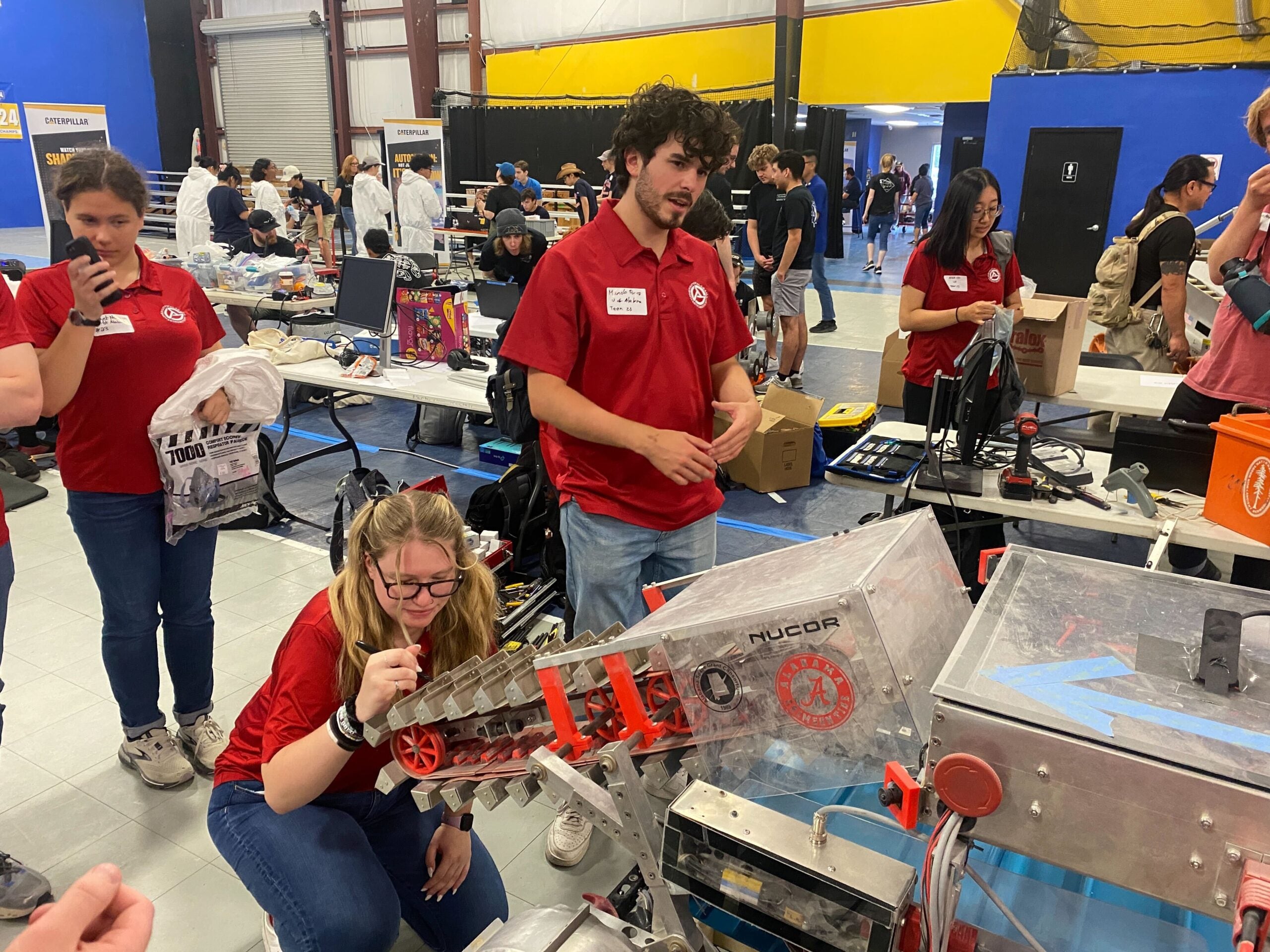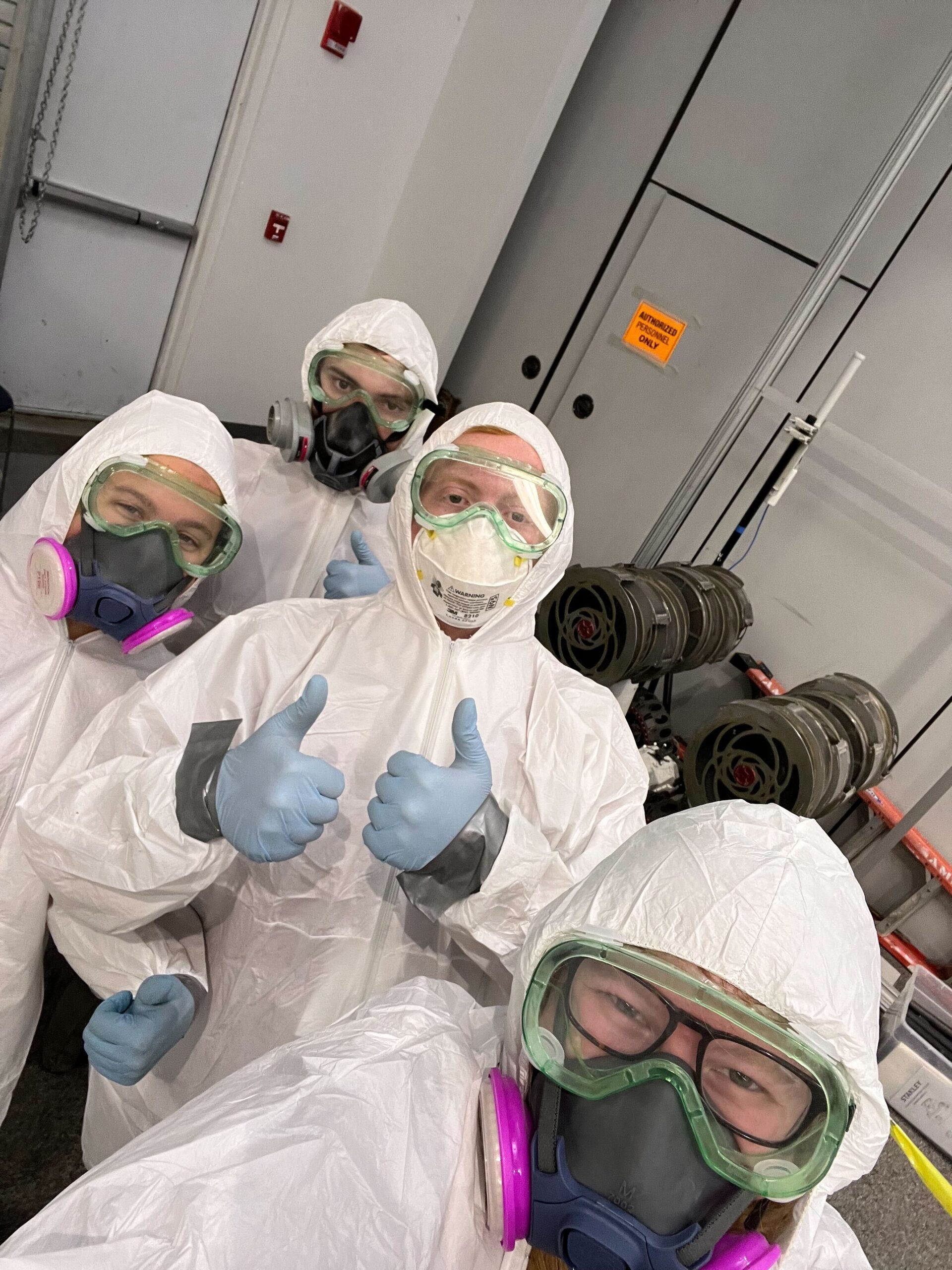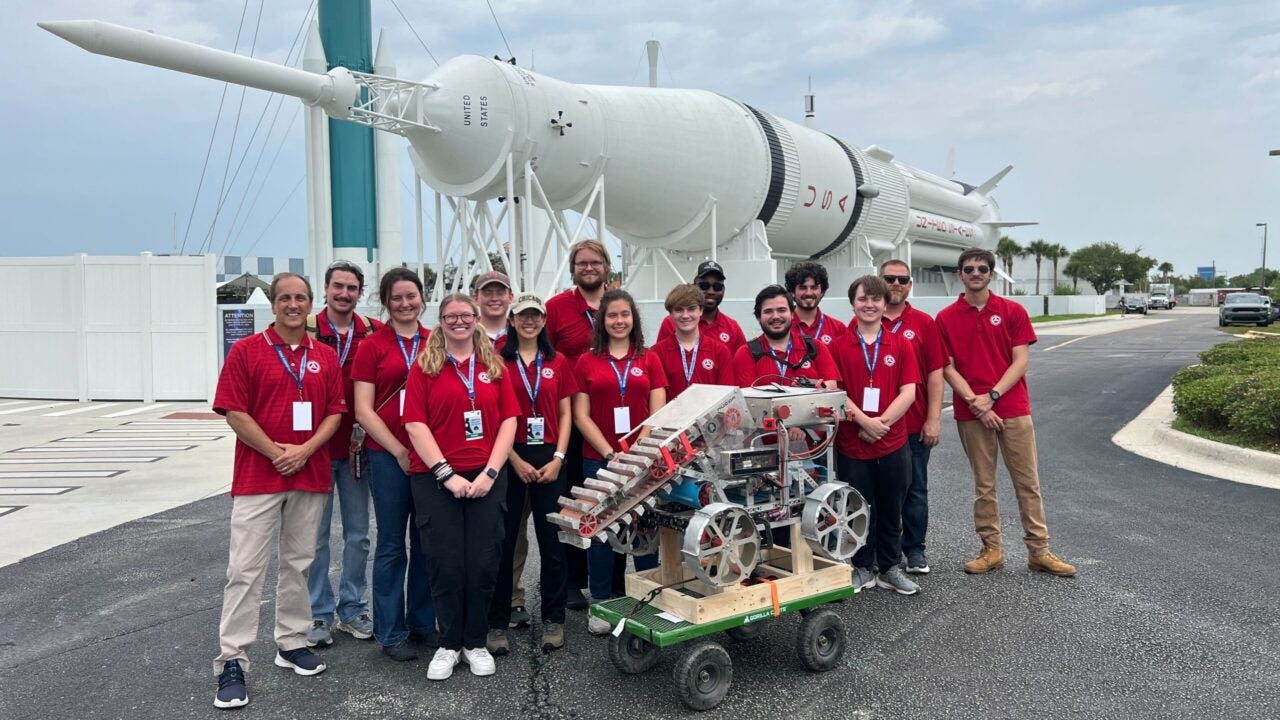The UA Astrobotics team earned a ninth win in NASA’s Lunabotics Challenge, a robotic mining competition held in a simulated lunar environment.
Teams are judged on their robot’s performance alongside deliverables turned in throughout the year: a project management plan, systems engineering paper, a technical presentation slide show, an outreach paper, and finally, a “proof of life” video of their functional rover.
The team won first place in robot autonomy, second place in mining/construction, and second place for their technical paper for a first-place finish overall.
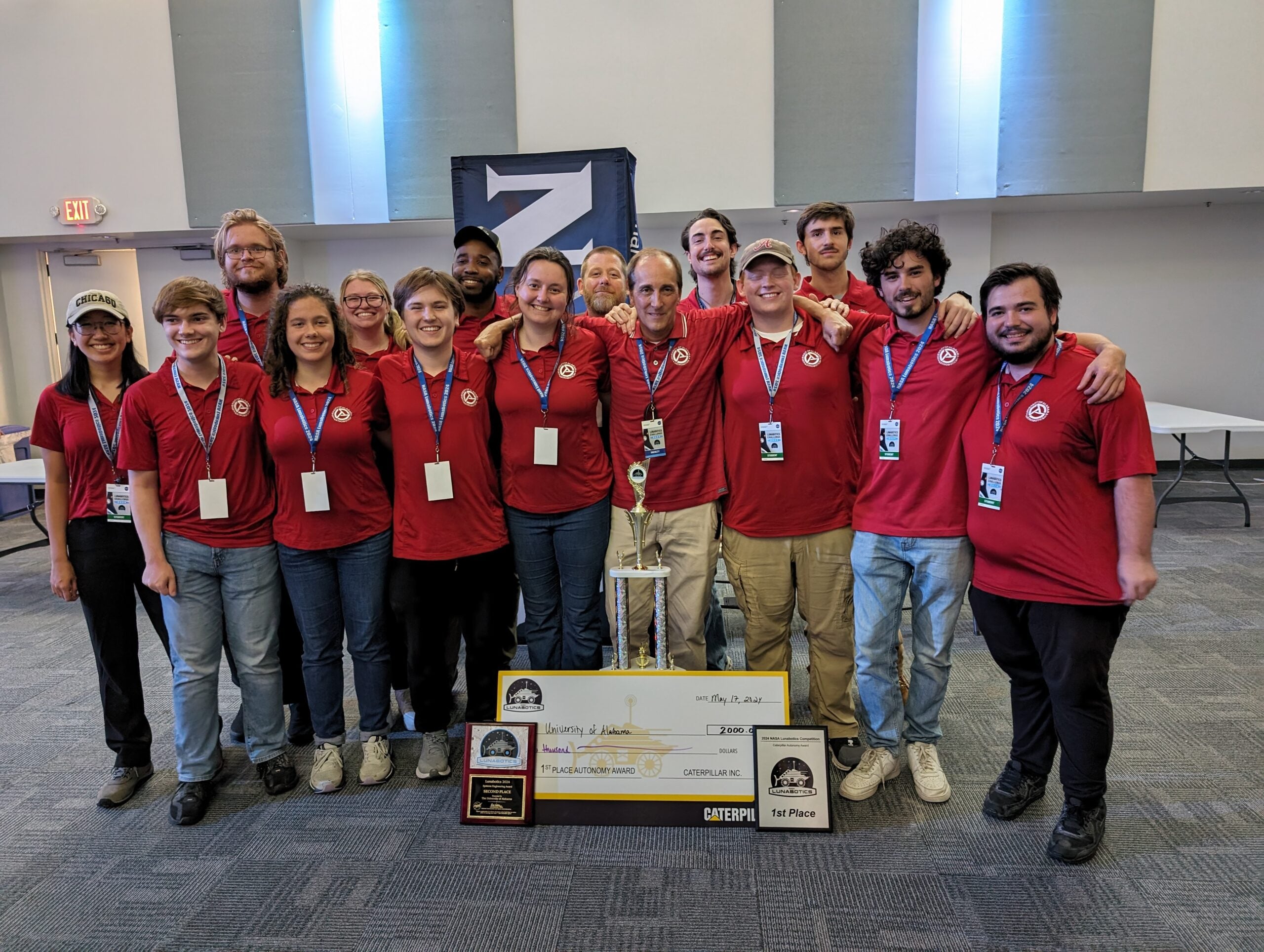
Putting in The Work
“The students on the UA Astrobotics team worked tirelessly from September through the end of May to achieve this win,” said Dr. Ken Ricks, a professor of electrical and computer engineering and the team’s faculty adviser. “During the competition alone, they worked more than 200 hours over ten days. I am happy to see their efforts recognized.”
While previous challenges have focused on excavating simulated moon soil or lunar ice and returning it to a home base, this year’s team faced a new mission. The rovers needed to dig into the simulated moon surface, collect as much material as possible and then use it to build an oblong mound, or berm.
A digital scan of the height and volume of the completed berm determined which ten teams would compete in the final rounds at the Kennedy Space Center and determined the winners.
“The early rounds favored lighter-weight rovers,” team lead Ben Gulledge, a graduate student in mechanical engineering, said. “But the NASA stage had two 30-minute rounds, and many of the lighter machines couldn’t last.”
Ricks agreed that durability is a key factor in the success of UA Astrobotics. “This is not a machine with delicate scientific instruments,” he said. “It weighs only 175 pounds but should be able to move 10,000 pounds of material in 11 days. It has to be tough.”
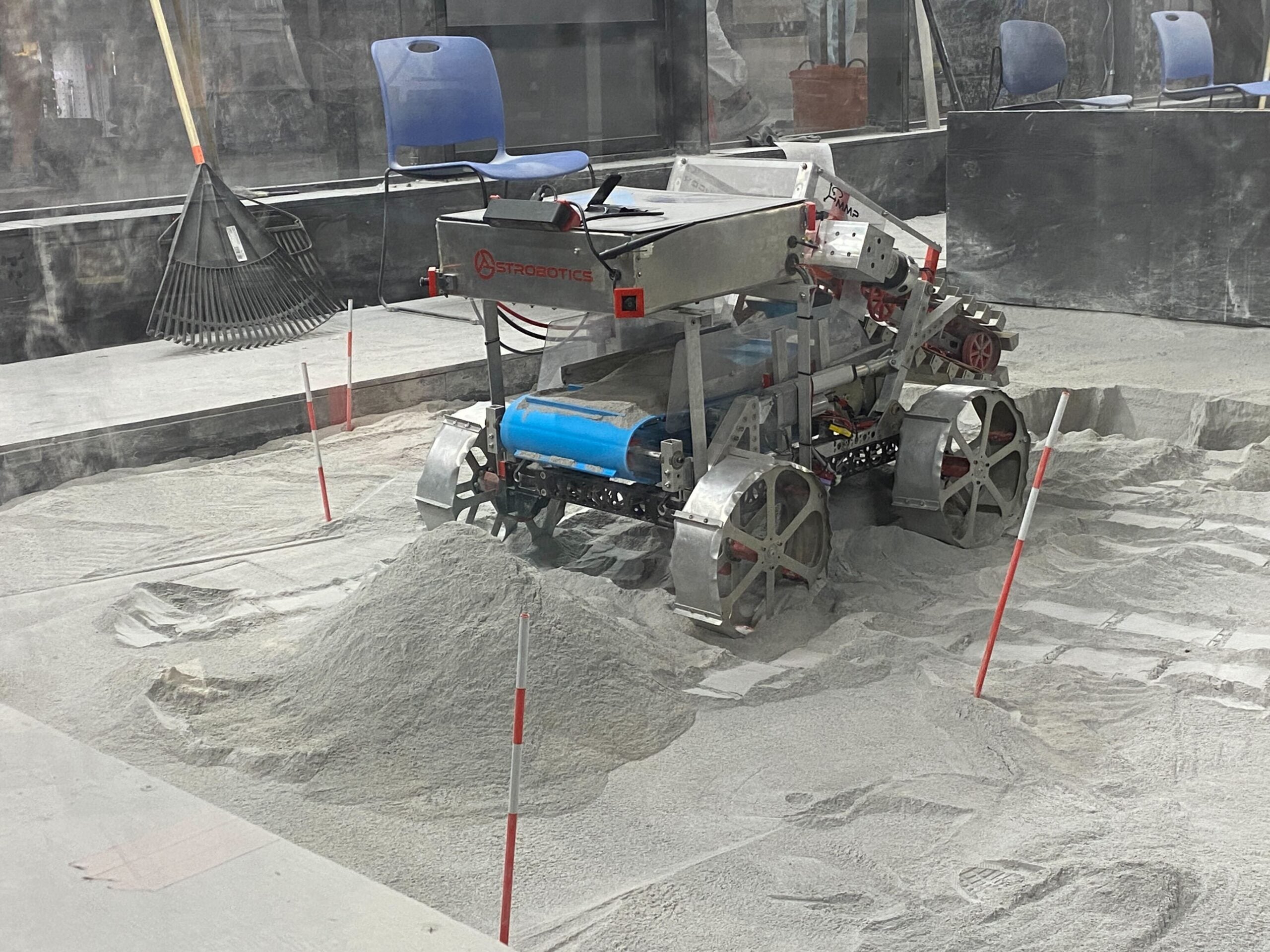
A Meeting of Minds
The team started with 90 students, thirteen of whom traveled to the robotic mining competition. Gulledge acknowledged that managing so many people to meet the demanding deadlines was a challenge. “We encouraged people to take as big or small of a role as their situation allowed,” he said.
“Alabama has a winning culture and UA Astrobotics has a tradition of winning. The students who come before teach you.”
Almost as exciting as the competition itself was rubbing shoulders with the industry’s great minds, according to Gulledge. “It was exciting to see the enthusiasm for our work from NASA engineers and people who do this for a living,” he said. “Everyone worked so hard to be there, and it was nice to see it pay off and be around so many people who care about what you’re doing.”
